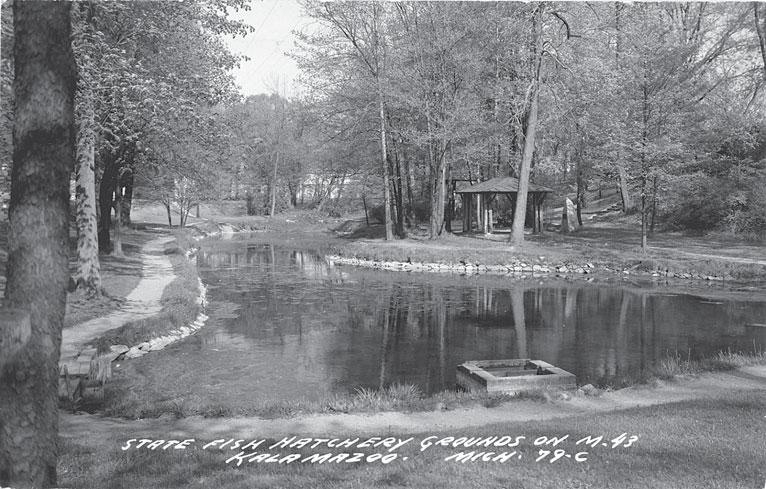
3 minute read
Here, Fishy Fishy - Wolf Lake Fish Hatchery
Here, Fishy Fishy
The History of the Wolf Lake Fish Hatchery
Advertisement
By Keith Howard, Kalamazoo Public Library
For millennia the supply of fi sh in Michigan’s lakes and waterways seemed inexhaustible. By the 1870s, however, deforestation and overfi shing had begun to take its toll. State-run hatcheries at Paris, Alpena, Grand Rapids and elsewhere, along with smaller independent operations near Hastings and Richland, struggled to keep area streams, rivers, and lakes stocked with trout, bass, perch, and other such fry. But anglers in southwest Michigan saw new hope in 1926 when a local conservation group launched an effort to establish a state fi sh hatchery near Kalamazoo. The Isaak Walton League, one of America’s oldest conservation organizations, was founded by Chicago area sportsmen in 1922. Shortly thereafter, the William Locher Chapter of the Isaak Walton League was organized in Kalamazoo. Conservationists were eying Kalamazoo County as a possible site for a new state fi sh hatchery and the local Waltons took up the challenge.


In April 1927, chapter president Henry Pierce secured an option on a portion of William McKoewn’s farm at Wolf Lake some ten miles west of Kalamazoo near the Van Buren County line. Conveniently situated where the “West Main street road” crossed the “Williams-Allegan road,” McKoewn’s property seemed ideal with its abundant supply of fresh fl owing water and open meadowlands. The Wolf Lake project was brought before the state’s conservation department, which agreed to pledge one third of the $7,500 purchase price if local “Ikes” could raise the remaining $5,000. Once purchased the property would be turned over to the state for development. The deal was fi nalized in November and within months, work on the Wolf Lake site was underway.

By 1930, a dozen breeding ponds had been built and more were in the works. In May, the hatchery acquired additional property to the southwest, which included a former gristmill in Almena. The area was known for some of the county’s best fi shing spots like Hayden Brook and legendary Whiskey Run.


M-43 was open through to M-40 by then and was already a popular automobile route. One traffi c-stopping sight along the way was the hatchery’s centuryold water wheel. The wheel was removed from o the historic Almena Mill and attached to a stone millhouse near the highway. With manicured gardens, picnic tables, and rustic shelters, the Wolf Lake site began to attract thousands of visitors annually.

Even during tough times, work at Wolf Lake continued in earnest. During the Depression years, four hundred workers were brought in as part of President Roosevelt’s New Deal to help with a fi ve-year, $154,000 expansion project. CWA and FERA laborers dug several new ponds by hand and made other improvements in the hatchery and surrounding property. In 1937 an additional $25,000 expansion saw the construction of a log cabin community building and rifl e range near the lake. More than just a “nice place,” the 426-acre ing and rifle range near the lak Wolf Lake operation had become the largest diversifi ed fi sh hatchery in the world.
Today, the Wolf Lake Fish Hatchery continues to produce tens of millions of steelhead, salmon, walleye, and muskellunge for planting in Michigan lakes and streams. And just as they did a century ago, visitors can enjoy watching native fi sh navigate the deep clear pools, while learning more about conservation and the vital role still played by Great Lakes hatcheries. More at kpl.gov











